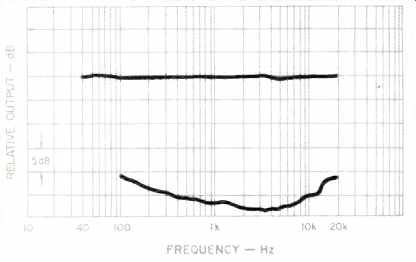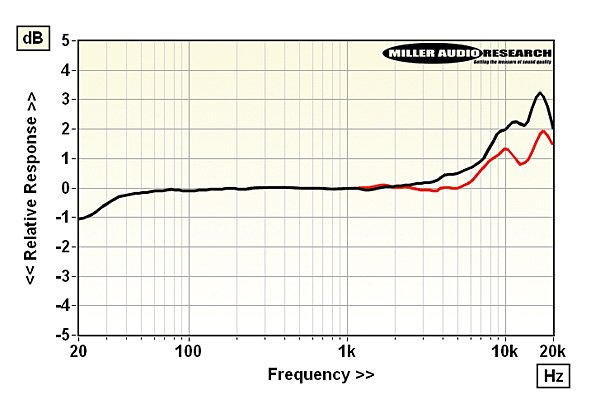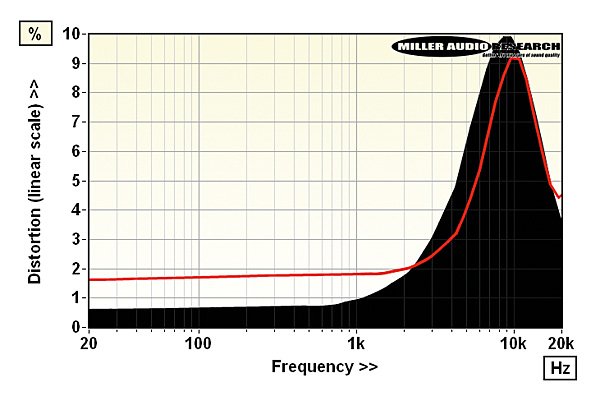I’ve been listening to vinyl since 1985’ish, when I got my first turntable as an impoverished grad student who used to scrounge around in the bargain bins of Princeton Record Exchange where one could pick up an entire box set of Haydn symphonies for $5. Oh, those were the days! Long since gone…one valuable lesson I’ve learned in all these years that applies not just to phono cartridges, but to speakers, amplifiers, DACs, preamps etc. is that there is no world’s best *anything*! One has to keep around a set of references and return to them periodically to recalibrate one’s years.
For example, no moving coil cartridge that’s worth any amount of money (yup, even those obscenely priced at 50 grand or more) will track as well as a Shure V15 vXMR moving magnet, or have as flat a frequency response (20 Hz - 20 KHz +/- 0.5 dB or thereabouts). So, to understand how colored your fabulously expensive moving coil cartridge is, you need to have a Shure around. Otherwise, you’re just wrapped up in your bubble of illusions. Similarly, as good as stereo cartridges can sound, of whatever ilk, nothing sounds like mono in my opinion, so you‘ll need a mono vinyl cartridge reference (I use a Miyajima Zero infinity mono, which only tracks horizontal groove modulations, not vertical, so don’t try playing a stereo record with it!).
Next, one has to understand that even the very best moving coil cartridges have frightening amounts of distortion in high frequencies, where vinyl is at its weakest. I’m talking 15-20% THD in the range from 12 kHZ to 20 KHz. So, the last thing you want to do is have a moving coil cartridge that exacerbates this problem. Unfortunately, far too many of them do. I’ve owned a good chunk of Lyra cartridges in my time (such as the Titan), and while I understand the allure of Lyra cartridges, they are significantly colored in the high frequencies due to a pronounced lift of +3 dB to +5 dB in the treble. Jonathan Carr, designer of Lyra’s offerings, must like this sound, but it is simply put, not accurate. One listen to a razor flat Shure will show you how colored the Lyra’s are.
My current cartridge of choice for moving coil is the Koetsu Onyx Blue Agate, a wonderfully musical cartridge that to my ears sounds like music. Sugano was a wise man who many years ago understood that to make phono cartridges sound musical, you must absolutely roll off the high frequencies. All stone body Koetsu’s do this, regardless of price. The high frequency roll off begins around 2-3 KHz, and by 15-20 KHz, a stone body Koetsu will be about -10-12 dB down in the treble. This is a wonderful thing to do, because exactly where the moving coil cartridge has the highest levels of distortion, the Koetsu is shelved down in response.
Peter Walker, the legendary designer of Quad electrostatics, used to adamantly argue that every phono preamp must have several levels of high frequency roll off filters, which the famed Quad preamplifiers (34, 44, and the old Quad II preamps) all had. He said that if you played a violin on a moving coil cartridge, you heard the zzz’ing distortion rising as the frequencies went up. He called it tracing distortion, and it remains as much as a problem today as it was in the 1950s. There’s no way to get around this!
Unfortunately, all the audio rags who devote pages to talking about phono cartridges don’t measure them in any way. This is absolutely useless. One notable exception is the British HiFi News and Record Review, who measure every cartridge that gets reviewed. Check out their reviews for their measurements. The famed Lyra Etna, for example, is about +5 dB in the treble, a nice zing to the sound, but hardly accurate. The stone body Koetsu is sloped downwards, about -6 to -8 dB, not accurate either, but at least it sounds more like music to my ears with no additional zing. The Shure is razor flat in its response, to within a fraction of a dB.
Of course, frequency response is not the only game in town. One would like a cartridge that tracks well. The Koetsu’s have never been known as great trackers. You get something like 60 muM of traceability from a Koetsu, but about 80 muM from a Lyra (much better), but both of these are not as good as a classic Shure moving magnet.
So, again, I come back to my original conclusion. There is no best vinyl cartridge (as there is no best loudspeaker or amplifier). There are various designs and each has some compromises built into it, no matter how much money you spend. What one can do in such a situation is keep around multiple references, and rotate between them, so you understand the colorations built into the different units.
For example, no moving coil cartridge that’s worth any amount of money (yup, even those obscenely priced at 50 grand or more) will track as well as a Shure V15 vXMR moving magnet, or have as flat a frequency response (20 Hz - 20 KHz +/- 0.5 dB or thereabouts). So, to understand how colored your fabulously expensive moving coil cartridge is, you need to have a Shure around. Otherwise, you’re just wrapped up in your bubble of illusions. Similarly, as good as stereo cartridges can sound, of whatever ilk, nothing sounds like mono in my opinion, so you‘ll need a mono vinyl cartridge reference (I use a Miyajima Zero infinity mono, which only tracks horizontal groove modulations, not vertical, so don’t try playing a stereo record with it!).
Next, one has to understand that even the very best moving coil cartridges have frightening amounts of distortion in high frequencies, where vinyl is at its weakest. I’m talking 15-20% THD in the range from 12 kHZ to 20 KHz. So, the last thing you want to do is have a moving coil cartridge that exacerbates this problem. Unfortunately, far too many of them do. I’ve owned a good chunk of Lyra cartridges in my time (such as the Titan), and while I understand the allure of Lyra cartridges, they are significantly colored in the high frequencies due to a pronounced lift of +3 dB to +5 dB in the treble. Jonathan Carr, designer of Lyra’s offerings, must like this sound, but it is simply put, not accurate. One listen to a razor flat Shure will show you how colored the Lyra’s are.
My current cartridge of choice for moving coil is the Koetsu Onyx Blue Agate, a wonderfully musical cartridge that to my ears sounds like music. Sugano was a wise man who many years ago understood that to make phono cartridges sound musical, you must absolutely roll off the high frequencies. All stone body Koetsu’s do this, regardless of price. The high frequency roll off begins around 2-3 KHz, and by 15-20 KHz, a stone body Koetsu will be about -10-12 dB down in the treble. This is a wonderful thing to do, because exactly where the moving coil cartridge has the highest levels of distortion, the Koetsu is shelved down in response.
Peter Walker, the legendary designer of Quad electrostatics, used to adamantly argue that every phono preamp must have several levels of high frequency roll off filters, which the famed Quad preamplifiers (34, 44, and the old Quad II preamps) all had. He said that if you played a violin on a moving coil cartridge, you heard the zzz’ing distortion rising as the frequencies went up. He called it tracing distortion, and it remains as much as a problem today as it was in the 1950s. There’s no way to get around this!
Unfortunately, all the audio rags who devote pages to talking about phono cartridges don’t measure them in any way. This is absolutely useless. One notable exception is the British HiFi News and Record Review, who measure every cartridge that gets reviewed. Check out their reviews for their measurements. The famed Lyra Etna, for example, is about +5 dB in the treble, a nice zing to the sound, but hardly accurate. The stone body Koetsu is sloped downwards, about -6 to -8 dB, not accurate either, but at least it sounds more like music to my ears with no additional zing. The Shure is razor flat in its response, to within a fraction of a dB.
Of course, frequency response is not the only game in town. One would like a cartridge that tracks well. The Koetsu’s have never been known as great trackers. You get something like 60 muM of traceability from a Koetsu, but about 80 muM from a Lyra (much better), but both of these are not as good as a classic Shure moving magnet.
So, again, I come back to my original conclusion. There is no best vinyl cartridge (as there is no best loudspeaker or amplifier). There are various designs and each has some compromises built into it, no matter how much money you spend. What one can do in such a situation is keep around multiple references, and rotate between them, so you understand the colorations built into the different units.









